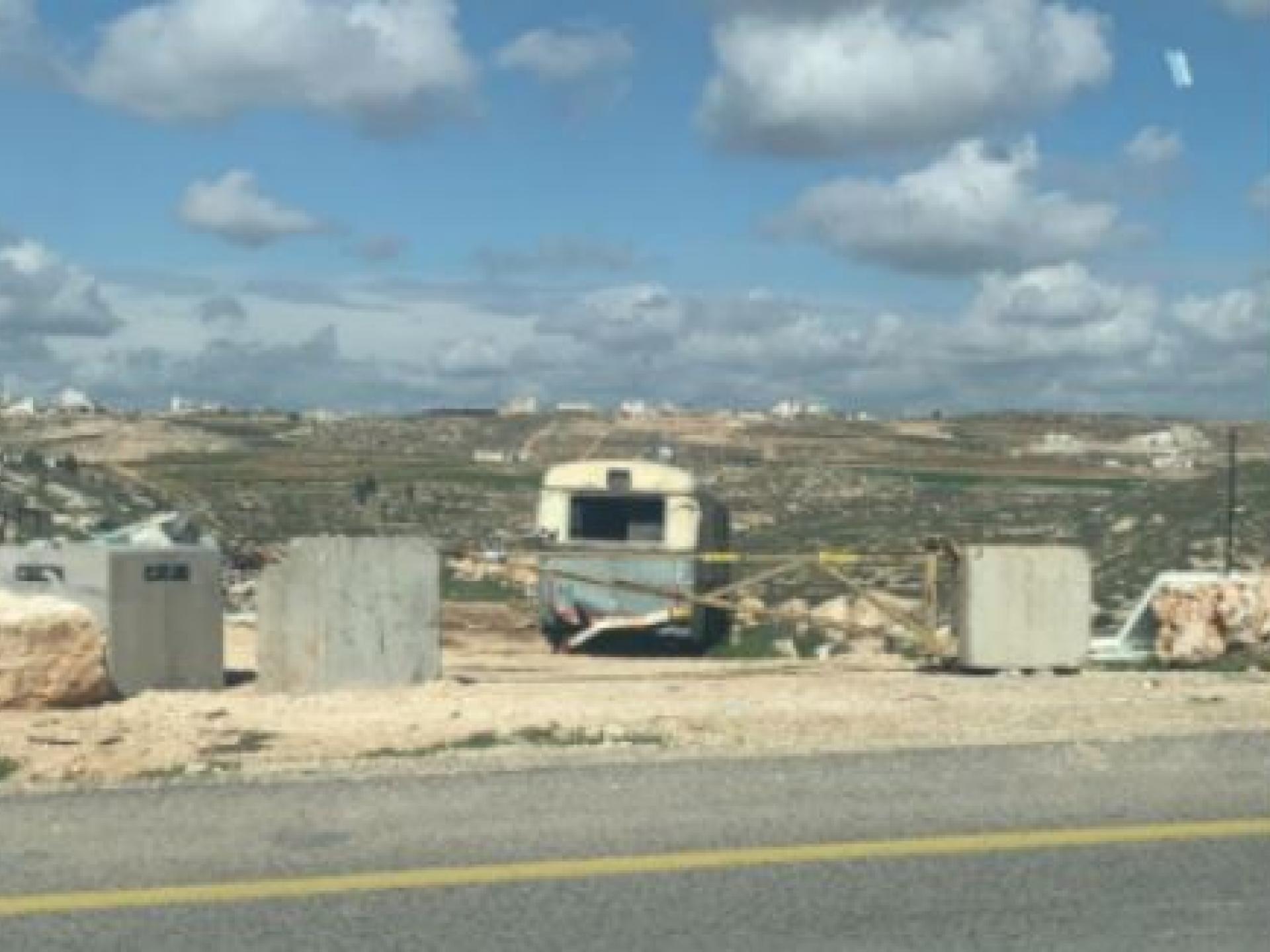Apartheid roads throughout the south of Mount Hebron
Meitar Checkpoint is deserted, empty of vehicles on the Palestinian side. The workers of the southern part of the Judean Hills have no work permits now and cannot come to work and find their livelihood there.
We continued on Road 60 and watched an armed colonist inside a fenced (by colonists) area. He was wearing a warm jacket and led his flock with his watch dog.
We intended to film but were questioned and chased away by soldiers in a military jeep. We continued our drive.
Next to Eshtamo’a we saw a new colonist residential bus.
At the entrance to Samu’a we met a young man of the Nasrallah family, who live in Samu’a. He says the army usually keeps the entrance to this locality closed. If they catch a vehicle trying to pass through on of the breaches to the road, they confiscate the driver’s car keys and do not return them, so the vehicle stands there, stuck in punishment.
We spoke with Farhan of Simia. He said that many young people from Simia opened the blockade that the army placed there a few days ago. Although the youngsters managed to cross into Simia, teachers do not arrive at the school. There are no studies inside the schoolhouse, and only some of the children study by zoom.
The entrance to Dahariya is closed, blocked all the way to Al Fawar. At Al Fawar-Dura Junction we watched pedestrians waking from one place to the other. This is the only way to move around in the South Hebron Hills region. Only soldiers and colonists drive on these apartheid roads.
In A-Tawane, too, movement is on foot only.


